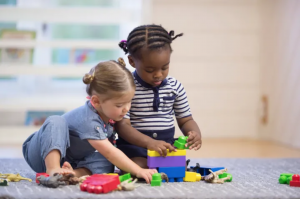
By the time babies are three months old, they can distinguish between races, and they prefer faces from their own ethnic group. As toddlers, that preference can start to put down roots in terms of how they understand people’s behaviour.
In the early 1990s, Carl James, Professor and Jean Augustine Chair in Education, Community and Diaspora at York University's Faculty of Education conducted research at Toronto childcare centres. Toddlers were offered a white or a Black doll, and asked to pick their favourite. Nearly all of the children, including the Black children, chose the white doll. The findings were virtually identical to a similar test performed by psychologists in the 1940s.
“Children are making sense of the world from the time they start looking around,” says James. “They try to understand what everything means, and so they give meaning to things... so, no time is too early.”
